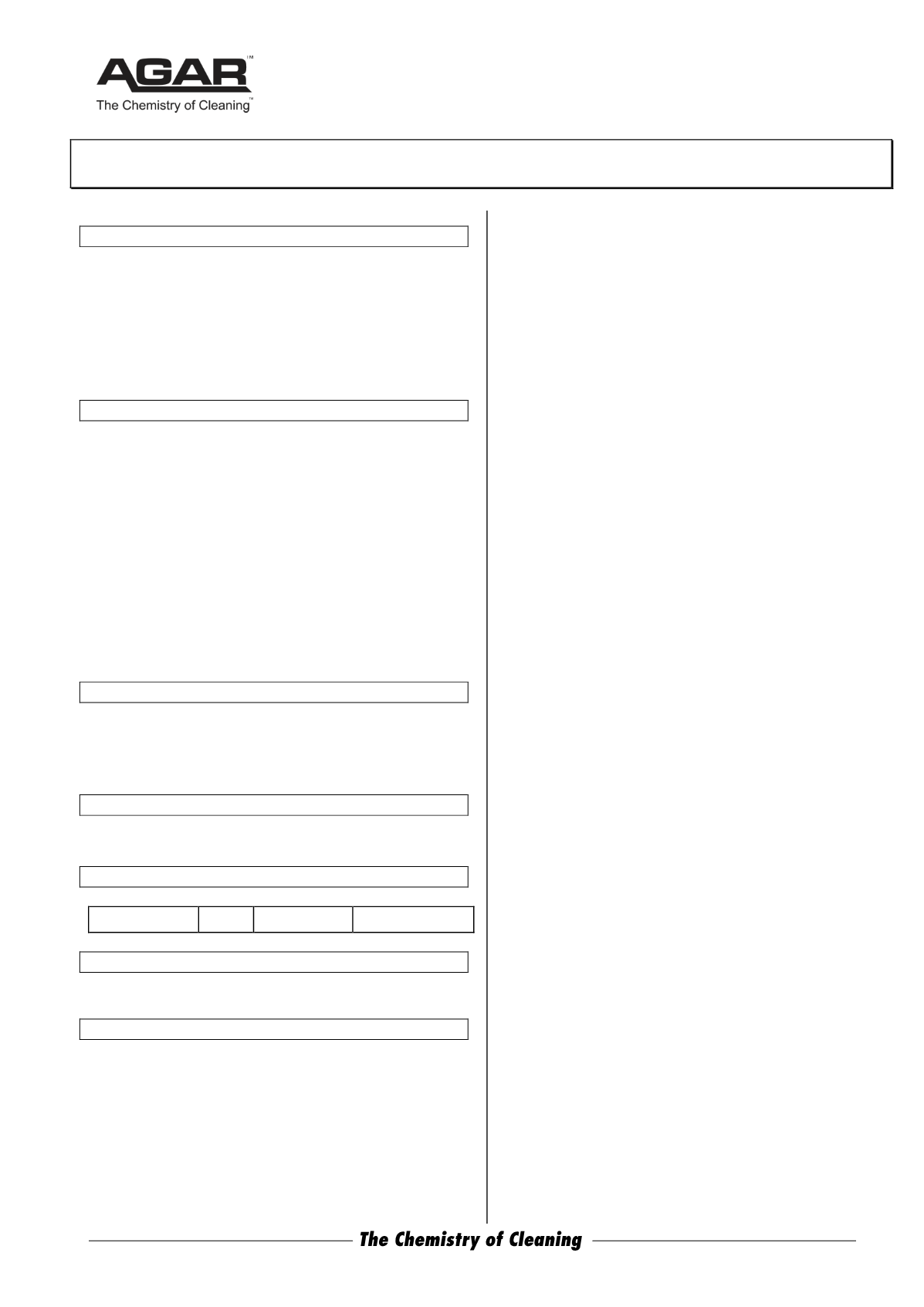

ABN 80 004 726 890 | MADE IN AUSTRALIA
Safety Data Sheet
Issued: January 12, 2016
Page 2 of 2
TANNEX
10 STABILITY AND REACTIVITY
Stable.
Tannex is slightly corrosive to some metals and should not be
allowed to come into contact with mild steel, cast iron, brass,
copper and tinned or galvanised materials.
Hazardous polymerization: None.
11 TOXICOLOGICAL INFORMATION
Health Effects:
Acute -
Swallowed:
Product is irritating to the gastro-intestinal tract if
swallowed but this is considered unlikely to occur in
commercial environments. Ingestion may cause diarrhoea.
Eye:
Eye contact may result in severe irritation.
Skin:
Principal route of exposure is usually by skin contact.
Irritating to the skin and capable of causing skin reactions.
Inhalation:
Irritating to the respiratory system if concentrated
vapours are inhaled.
Health Effects -
Chronic
: Repeated or prolonged skin contact
may cause swelling, redness, blistering or dermatitis.
Toxicity Data: Not available for mixture.
12 ECOLOGICAL INFORMATION
Ecotoxicity: No information available.
Persistence and degradability: Biodegradable.
Mobility: -
Advice: -
13 DISPOSAL CONSIDERATIONS
For disposal, refer to State Land Waste Management Authority.
14 TRANSPORT INFORMATION
UN No.: - not reg Class: - Packg.Group: -
Hazchem: -
15 REGULATORY INFORMATION
Poisons Schedule Number: Not classed as a poison.
16 OTHER INFORMATION
AICS Listing:
All components of Tannex are listed on the
Australian Inventory of Chemical Substances (AICS).
Date: This SDS issued on January 12, 2016 shall remain valid
for 5 years unless a new SDS is issued in the meantime.
Please contact Agar Cleaning Systems P/L to ensure you have
the latest version of this product’s SDS.
Abbreviations and Definitions of terms used:
<
less than
>
greater than
AICS
Australian Inventory of Chemical Substances
CAS
Chemical Abstracts Service (Registry Number)
COD Chemical Oxygen Demand
deg C Degrees Celsius
g
gram
g/L grams per litre
HSIS
Hazardous Substance Information System
kg
kilogram
L
Litre
LC50
The concentration of a material (inhaled) that
will be lethal to 50% of the test animals.
LD50
The dose (swallowed all at once) which is
lethal to 50% of a group of test animals.
m3
Cubic metre
mg
milligram
mg/m3 milligrams per cubic metre
miscible A liquid that mixes homogeneously with
another liquid
N/A
Not applicable
N/K
Not Known
NIOSH
National Institute for Occupational Safety and
Health
non-haz
Non- hazardous
PEL
Permissible Exposure Limit
ppb
Parts per billion
ppm
Parts per million
STEL Short term exposure limit
TLV
Threshold Limit Value
TWA
Time Weighted average
UN
United Nations (Number)
wt
weight
The information in this Data Sheet is based on our present
knowledge. However, this shall not constitute a guarantee for
any specific product features and shall not establish a legally
valid contractual relationship. As far as lawfully possible, Agar
Cleaning Systems accepts no liability for any loss, injury or
damage (including consequential loss) suffered or incurred by
any person as a consequence of reliance on the information
and advice contained herein.
End of SDS.


















